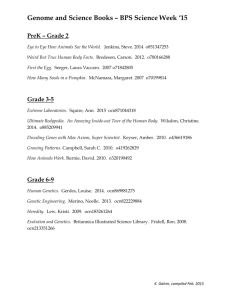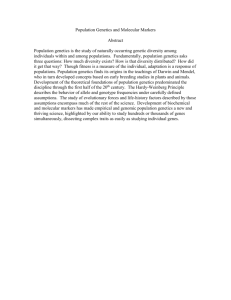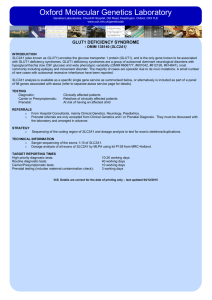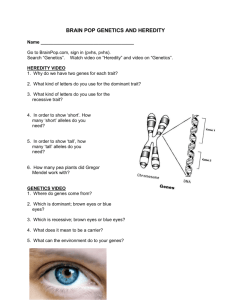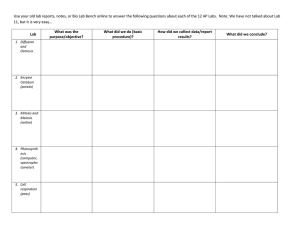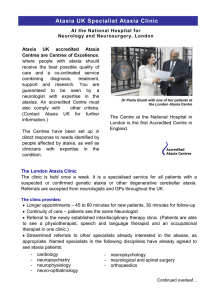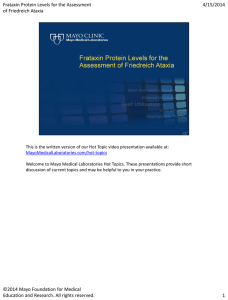Oxford Molecular Genetics Laboratory
advertisement
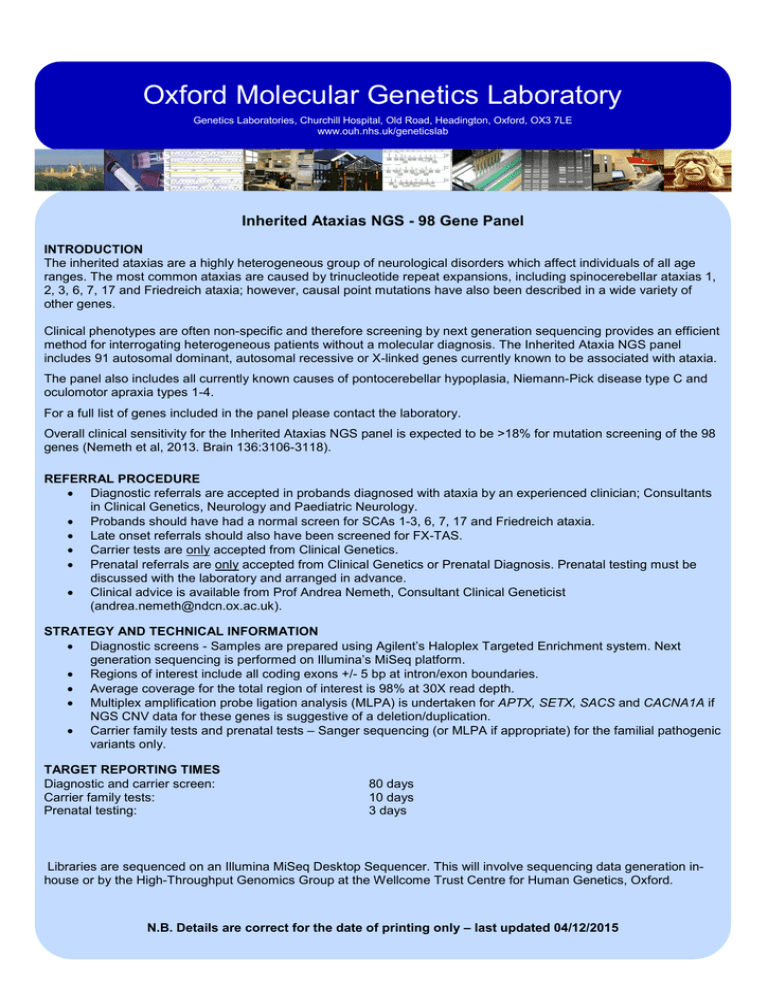
Oxford Molecular Genetics Laboratory Genetics Laboratories, Churchill Hospital, Old Road, Headington, Oxford, OX3 7LE www.ouh.nhs.uk/geneticslab Inherited Ataxias NGS - 98 Gene Panel INTRODUCTION The inherited ataxias are a highly heterogeneous group of neurological disorders which affect individuals of all age ranges. The most common ataxias are caused by trinucleotide repeat expansions, including spinocerebellar ataxias 1, 2, 3, 6, 7, 17 and Friedreich ataxia; however, causal point mutations have also been described in a wide variety of other genes. Clinical phenotypes are often non-specific and therefore screening by next generation sequencing provides an efficient method for interrogating heterogeneous patients without a molecular diagnosis. The Inherited Ataxia NGS panel includes 91 autosomal dominant, autosomal recessive or X-linked genes currently known to be associated with ataxia. The panel also includes all currently known causes of pontocerebellar hypoplasia, Niemann-Pick disease type C and oculomotor apraxia types 1-4. For a full list of genes included in the panel please contact the laboratory. Overall clinical sensitivity for the Inherited Ataxias NGS panel is expected to be >18% for mutation screening of the 98 genes (Nemeth et al, 2013. Brain 136:3106-3118). REFERRAL PROCEDURE • Diagnostic referrals are accepted in probands diagnosed with ataxia by an experienced clinician; Consultants in Clinical Genetics, Neurology and Paediatric Neurology. • Probands should have had a normal screen for SCAs 1-3, 6, 7, 17 and Friedreich ataxia. • Late onset referrals should also have been screened for FX-TAS. • Carrier tests are only accepted from Clinical Genetics. • Prenatal referrals are only accepted from Clinical Genetics or Prenatal Diagnosis. Prenatal testing must be discussed with the laboratory and arranged in advance. • Clinical advice is available from Prof Andrea Nemeth, Consultant Clinical Geneticist (andrea.nemeth@ndcn.ox.ac.uk). STRATEGY AND TECHNICAL INFORMATION • Diagnostic screens - Samples are prepared using Agilent’s Haloplex Targeted Enrichment system. Next generation sequencing is performed on Illumina’s MiSeq platform. • Regions of interest include all coding exons +/- 5 bp at intron/exon boundaries. • Average coverage for the total region of interest is 98% at 30X read depth. • Multiplex amplification probe ligation analysis (MLPA) is undertaken for APTX, SETX, SACS and CACNA1A if NGS CNV data for these genes is suggestive of a deletion/duplication. • Carrier family tests and prenatal tests – Sanger sequencing (or MLPA if appropriate) for the familial pathogenic variants only. TARGET REPORTING TIMES Diagnostic and carrier screen: Carrier family tests: Prenatal testing: 80 days 10 days 3 days Libraries are sequenced on an Illumina MiSeq Desktop Sequencer. This will involve sequencing data generation inhouse or by the High-Throughput Genomics Group at the Wellcome Trust Centre for Human Genetics, Oxford. N.B. Details are correct for the date of printing only – last updated 04/12/2015
